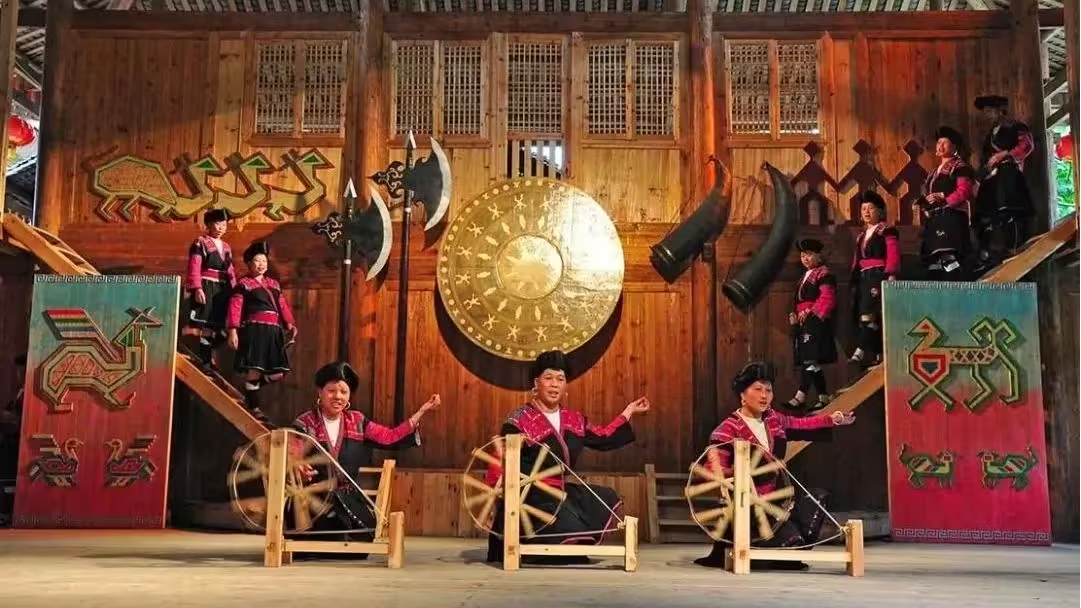Guilin, located between the Xiangjiang and Pearl River basins, is a world-renowned tourist city known for its breathtaking natural scenery and rich historical culture. Although Guilin’s culture is closely related to that of the Yangtze River Basin, its unique blend of folk customs and vibrant ethnic traditions makes it even more captivating.
Guilin is home to a diverse array of ethnic groups, including the Zhuang, Hui, Miao, Yao, and Dong minorities. Though these groups share a common cultural environment within the broader Chinese heritage, they have all preserved their distinct customs, which are reflected in their traditional clothing, food, festivals, and even languages. Each group’s way of life adds to the colorful mosaic of Guilin’s cultural landscape.
The Yao ethnic group, for example, is known for its traditional long drum dance, a graceful performance where dancers skillfully move in sync with the beating drums, creating an entrancing spectacle of rhythm and movement. The Dong people, on the other hand, have their own unique folk opera called Dong drama, which showcases their cultural heritage. They are also known for their exceptional architectural artistry, with iconic structures such as wind-and-rain bridges and drum towers that highlight their craftsmanship.
The Yao people also have a special tea-drinking custom called “oil tea”, where guests are warmly welcomed with this flavorful tea, symbolizing deep friendship and hospitality. The Zhuang ethnic group celebrates their unique “Song Festival”, where traditional love songs are sung and cultural games like “throwing embroidered balls” and “bride carrying” are played during weddings. These distinctive traditions add a lively charm to their matrimonial customs.
The Miao people are renowned for their exquisite handicrafts, including embroidery, weaving, batik, paper-cutting, and jewelry making. Their intricate designs and craftsmanship have gained international fame for their beauty and creativity. These vibrant art forms are not just a reflection of their cultural heritage but also a testament to their artistic skill and ingenuity.
In Guilin, visitors can immerse themselves in this diverse cultural tapestry at the Lijiang Folk Customs Park along Linjiang Road, where the customs, arts, and traditions of the Yao, Dong, Zhuang, and Miao ethnic groups come together. The park offers a delightful mix of folk dances, cultural displays, and traditional cuisine, allowing visitors to experience the unique flavors and rhythms of these ethnic cultures. With joyful songs and spirited performances, the park provides a lively glimpse into the heart of Guilin’s multi-ethnic heritage, leaving visitors enchanted and eager to explore more.
The rich and colorful folk customs of Guilin make it not just a place of natural beauty but also a vibrant cultural hub where the diversity of China’s ethnic traditions shines brightly.

